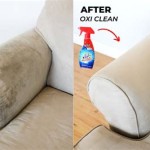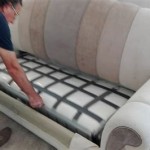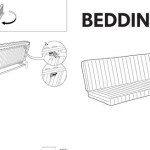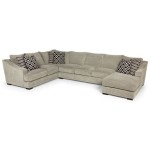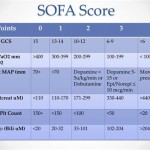Also write a title for SEO purpose. ## Craftmaster Sofa Fabrics: A Comprehensive Guide to Selection and Care Craftmaster is a well-regarded furniture manufacturer known for its commitment to quality and design. A significant element contributing to the overall appeal and longevity of Craftmaster sofas is the fabric selection. Understanding the various aspects of Craftmaster sofa fabrics, including their types, characteristics, performance, and care requirements, is crucial for making informed purchasing decisions and ensuring the lasting beauty of the furniture.
The selection of sofa fabric significantly impacts the aesthetic appeal of a living space. It also determines the sofa's durability, comfort, and maintenance requirements. Craftmaster offers a wide array of fabric options, each with distinct properties that cater to different lifestyles and design preferences. This article aims to provide a detailed overview of Craftmaster sofa fabrics, assisting consumers in navigating the selection process and maintaining the integrity of their chosen upholstery.
When evaluating fabrics, several factors enter the decision-making process. These encompass the fabric's weave, fiber content, performance characteristics (such as stain resistance and durability), color, texture, and overall aesthetic. These factors contribute significantly to the long-term satisfaction and value derived from the sofa. Certain fabrics are better suited for high-traffic areas and households with children or pets, while others may be more appropriate for formal living spaces or individuals with specific sensitivities.
Understanding Fabric Types: Natural vs. Synthetic Fibers
Craftmaster sofa fabrics are broadly classified into two categories: natural fibers and synthetic fibers. Each category encompasses numerous specific fabric types, each exhibiting unique characteristics and benefits.
Natural fibers are derived from plant or animal sources. Common examples include cotton, linen, wool, and silk. Cotton is known for its breathability, affordability, and comfort. It is relatively easy to clean but can be susceptible to staining and fading, especially if not treated with protective finishes. Linen is prized for its luxurious feel and natural texture. It is also a durable fabric, but it wrinkles easily and may require more specialized cleaning. Wool is a resilient and naturally stain-resistant fabric. Wool is warm and provides excellent insulation, making it a good choice for cooler climates. However, wool can be sensitive to heat and moisture. Silk provides a rich and lustrous appearance, making it a fashionable choice for formal living spaces. However, it requires professional cleaning and is often less durable than other fabric options. Natural fiber performance can vary depending on weaves and post-treatment.
Synthetic fibers are man-made materials designed to mimic or improve upon the properties of natural fibers. Popular synthetic options include polyester, acrylic, olefin, and microfiber. Polyester is a highly durable and stain-resistant fabric. It is also resistant to fading and shrinking, making it a versatile option for everyday use. Acrylic is similar to wool in texture and appearance. Acrylic is resistant to fading and mildew. Olefin is known for its exceptional stain resistance and durability. It is often used in outdoor furniture because it is resistant to moisture and sunlight damage. Microfiber is a fine synthetic fiber that is incredibly soft and comfortable. It is also resistant to stains and water, making it a practical choice for families with children or pets. Many synthetic blends are easier to clean and maintain than their natural counterparts.
Craftmaster also utilizes blended fabrics, which combine the properties of both natural and synthetic fibers. These blends aim to provide a balance of comfort, durability, and ease of care. For example, a cotton-polyester blend can offer the breathability of cotton with the added durability and stain resistance of polyester.
Evaluating Fabric Performance: Durability, Stain Resistance, and Maintenance
The performance of a sofa fabric is paramount, especially in high-traffic areas or households with children and pets. Several key performance characteristics influence a fabric's suitability for specific applications.
Durability refers to a fabric's ability to withstand wear and tear. Heavy-duty fabrics, such as microfiber, canvas, and certain synthetic blends, are ideal for sofas that experience frequent use. The durability of a fabric is often measured by its double rub count. A higher double rub count indicates greater resistance to abrasion. For residential use, fabrics with a double rub count of 15,000 or higher are generally recommended. For commercial applications, fabrics with a double rub count of 30,000 or higher are preferred.
Stain resistance is another crucial factor. Fabrics treated with stain-resistant finishes, such as Teflon or Scotchgard, offer enhanced protection against spills and stains. These finishes create a barrier that prevents liquids from penetrating the fabric fibers, making it easier to clean up messes before they become permanent. Certain fabrics, such as olefin and some microfibers, are naturally stain-resistant. They do not require additional treatments. Regular cleaning and spot treatment of spills are essential for maintaining the appearance of stain-resistant fabrics.
Maintenance requirements vary significantly depending on the fabric type. Some fabrics require professional cleaning, while others can be easily cleaned at home with mild soap and water. Understanding the recommended cleaning procedures for a specific fabric is crucial for preventing damage and preserving its appearance. Craftmaster typically provides cleaning instructions with their sofas, specifying the appropriate cleaning methods for the chosen fabric.
Consideration should also be given to the fabric’s lightfastness, which refers to its resistance to fading when exposed to sunlight. Fabrics with poor lightfastness ratings may fade over time, especially if the sofa is placed near a window. Choosing fabrics with high lightfastness ratings is recommended for areas with abundant sunlight. Other durability considerations are pilling and snagging. These can be improved by tightly woven fabrics, or by fabrics with a higher twist yarn.
Caring for Craftmaster Sofa Fabrics: Cleaning and Protection
Proper care and maintenance are essential for extending the life of Craftmaster sofa fabrics and preserving their beauty. Regular cleaning, stain removal, and protection measures can help prevent damage and maintain the fabric's appearance for years to come.
Regular vacuuming is recommended to remove dust, dirt, and debris that can accumulate on the fabric surface. Using an upholstery attachment on a vacuum cleaner can help prevent damage to the fabric fibers. Vacuuming should be performed at least once a week, or more frequently in high-traffic areas.
Promptly addressing spills and stains is crucial. Blotting the spill with a clean, absorbent cloth is the first step. Avoid rubbing the stain, as this can spread it and force it deeper into the fabric fibers. Using a stain remover specifically designed for upholstery fabrics is often recommended. Always test the stain remover in an inconspicuous area first to ensure that it does not damage or discolor the fabric. Follow the manufacturer's instructions carefully when using stain removers.
Professional cleaning is recommended for certain fabrics, especially those that are delicate or require specialized cleaning techniques. Professional upholstery cleaners have the knowledge and equipment to safely and effectively clean a wide range of fabrics. They can also provide stain removal services for stubborn stains that cannot be removed at home.
Protecting the sofa from direct sunlight can help prevent fading. Using curtains or blinds to filter sunlight is recommended, especially during peak hours. Avoiding placing the sofa near heat sources, such as radiators or fireplaces, can also help prevent damage to the fabric fibers. Consider using upholstery protectors or slipcovers to provide an additional layer of protection against stains, spills, and wear and tear. These protectors can be easily removed and cleaned.
Preventive measures, such as employing fabric protector sprays, can also act as a first line of defense against spills and dirt. These sprays create an invisible barrier that prevents liquids from penetrating the fabric, simplifying clean-up and reducing the risk of lasting stains. However, it’s important to reapply these protector sprays periodically, following the manufacturer’s guidelines, to ensure sustained effectiveness. Additionally, rotating cushions regularly can help to evenly distribute wear and tear, prolonging the life of the fabric. Avoiding eating or drinking on the sofa can also minimize the likelihood of spills and stains.
By understanding the characteristics of different Craftmaster sofa fabrics and implementing proper care practices, consumers can select the ideal upholstery for their needs and ensure the lasting beauty and durability of their furniture. The right choice of fabric, combined with diligent maintenance, will provide years of enjoyment and style to any living space.

Craftmaster Furniture Incorporated High Point Market

756550 Craftmaster Sofa Revolution Fabric Rudd Furniture

Discount Craftmaster Furniture Collections On

C921254 Teddy31 Craftmaster Sofa Rudd Furniture

Craftmaster Furniture Review

Smith Brothers 9000 Series Fabric Large Sofa Charleston Amish Furniture

701650 By Craftmaster Furniture Sofa Cost Plus Warehouse

787850 Turino 41 Hassle 03 Bahiti Standard Manhattan Craftmaster Sofas Owen Furniture Inc

Discount Craftmaster Furniture Collections On

Craftmaster Townhouse Sofa Johnson Furniture Mattress Mankato Mn


